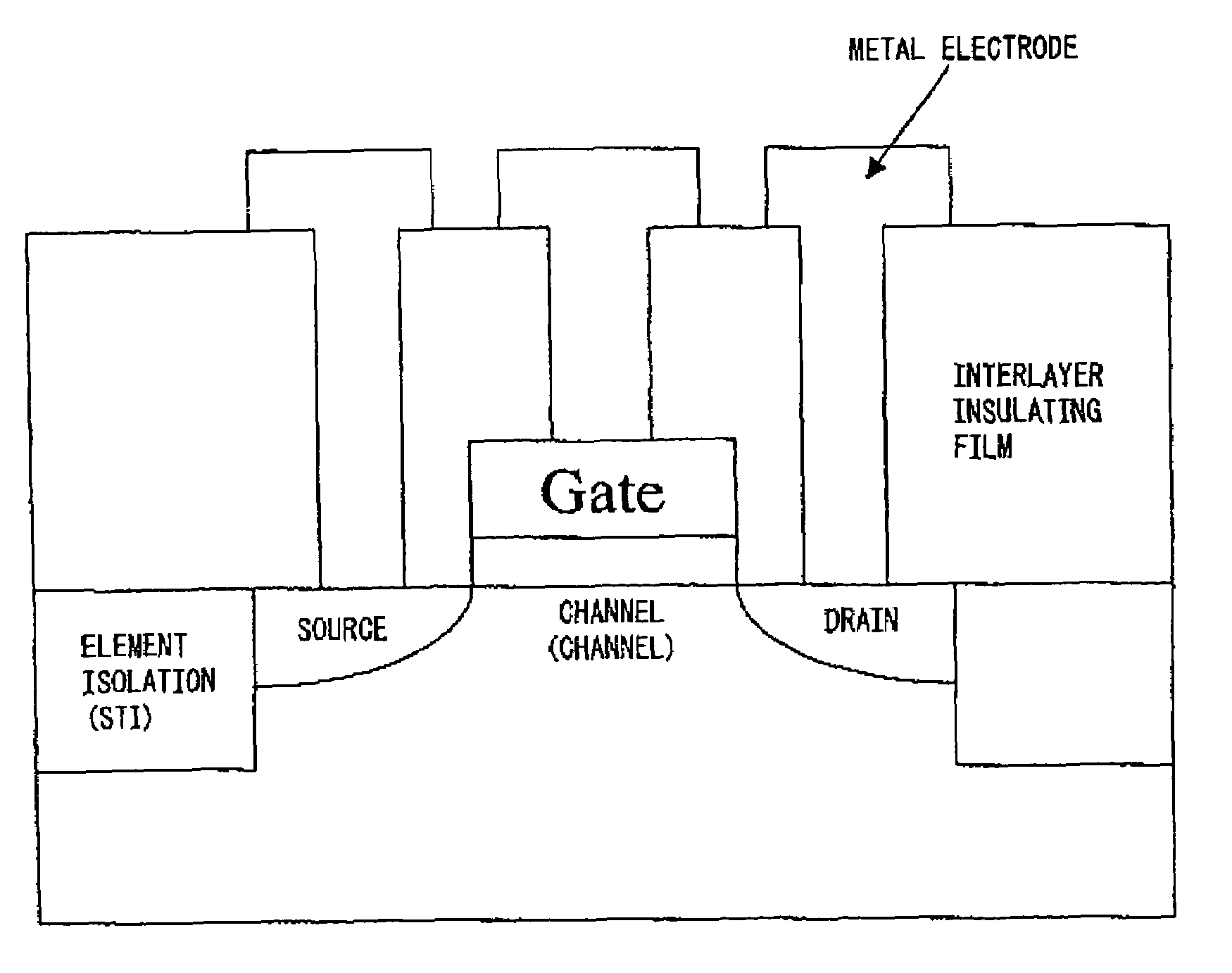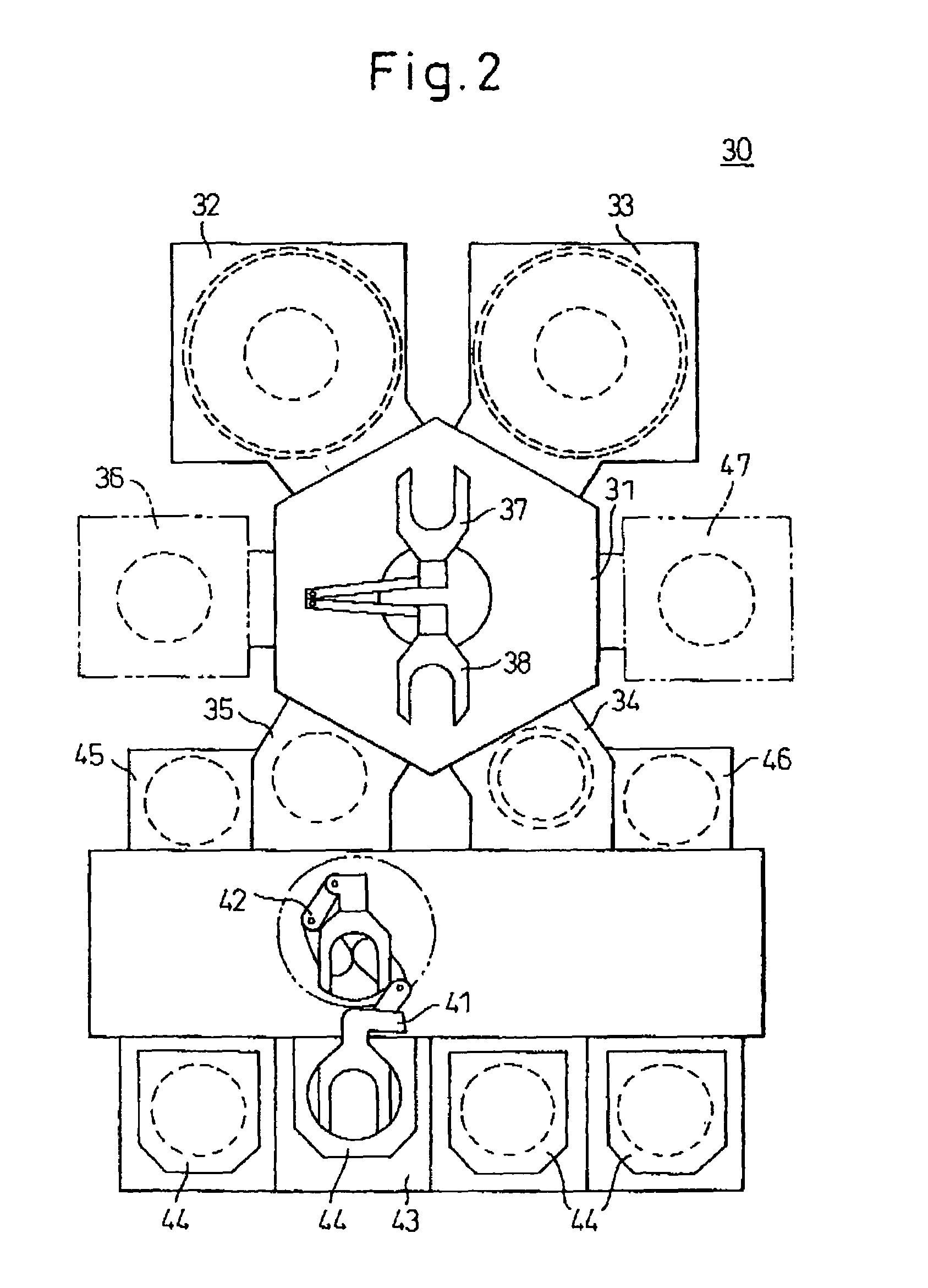Method for forming underlying insulation film
a technology of underlying insulation film and film, which is applied in the direction of electrical equipment, semiconductor devices, capacitors, etc., can solve the problems of increasing leakage current, increasing power consumption, and unable to obtain good interfacial properties, so as to achieve easy control of film forming rate and film forming time. , the effect of easy control of the thickness of the underlying film
- Summary
- Abstract
- Description
- Claims
- Application Information
AI Technical Summary
Benefits of technology
Problems solved by technology
Method used
Image
Examples
embodiment of
One Embodiment of Production Process
[0071]Next, the process for producing such an electronic device material comprises a gate insulator 2 and a gate electrode 13 is described below.
[0072]FIG. 2 is schematic view (schematic plan view) showing an example of the total arrangement of a semiconductor manufacturing equipment 30 for conducting the process for producing an electronic device material according to the present invention.
[0073]As shown in FIG. 2, in a substantially central portion of the semiconductor manufacturing equipment 30, there is disposed a transportation chamber 31 for transporting a wafer W (FIG. 2). Around the transportation chamber 31, there are disposed: plasma processing units 32 and 33 for conducting various treatments on the wafer, two load lock units 34 and 35 for conducting the communication / cutoff between the respective processing chambers, a heating unit 36 for operating various heating treatments, and a heating reaction furnace 47 for conducting various hea...
example 1
[0120]FIG. 14 and FIG. 15 show a change in the electrical film thickness (Teq) and in the uniformity of the electrical film thickness (range: difference between the maximum and minimum values of in-plane Teq), respectively, with respect to the oxidation time, when an oxidizing plasma processing is applied onto the HfSiO film and the oxide film formed by an RLSA oxidation process. Samples as shown in FIGS. 14 and 15 were produced by the following process.
(1) Substrate
[0121]A p-type silicon substrate having a resistivity of 8 to 12 Ωcm and a plane direction of (100) was used as the substrate. On the surface of the silicon substrate, a 500 A-sacrificial oxide film was formed by a thermal oxidization process.
(2) Pretreatment for HfSiO Film Formation
[0122]The sacrificial oxide film and contaminant factors (metals, organic materials and particles) were removed by RCA washing using a combination of APM (a mixed solution of ammonia, aqueous hydrogen peroxide and pure water), HPM (a mixed so...
example 2
[0127]The Cv property of the MOS capacitor which had been produced in Example 1 was evaluated. This measurement was performed by the following process. The CV property was evaluated for a capacitor having a gate electrode area of 10,000 μm2. The CV property was determined by evaluating the capacitance at each voltage in the process of sweeping the gate voltage from 1 V to about −2 V at a frequency of 1 MHz. From the thus determined CV property, the electrical film thickness was calculated.
[0128]FIG. 14 shows an electrical film thickness (Teq) when an oxidizing plasma processing is applied onto the HfSiO film and the oxide film formed by an RLSA oxidation process. The abscissa indicates an oxidation treatment time and the ordinate indicates an electrical film thickness (Teq).
[0129]As shown in FIG. 14, the reference oxide film reaches a film thickness of 25 A when the oxidation time is 20seconds or more. As the treatment time is shorter, the reproducibility of the process becomes lowe...
PUM
 Login to View More
Login to View More Abstract
Description
Claims
Application Information
 Login to View More
Login to View More - R&D
- Intellectual Property
- Life Sciences
- Materials
- Tech Scout
- Unparalleled Data Quality
- Higher Quality Content
- 60% Fewer Hallucinations
Browse by: Latest US Patents, China's latest patents, Technical Efficacy Thesaurus, Application Domain, Technology Topic, Popular Technical Reports.
© 2025 PatSnap. All rights reserved.Legal|Privacy policy|Modern Slavery Act Transparency Statement|Sitemap|About US| Contact US: help@patsnap.com



